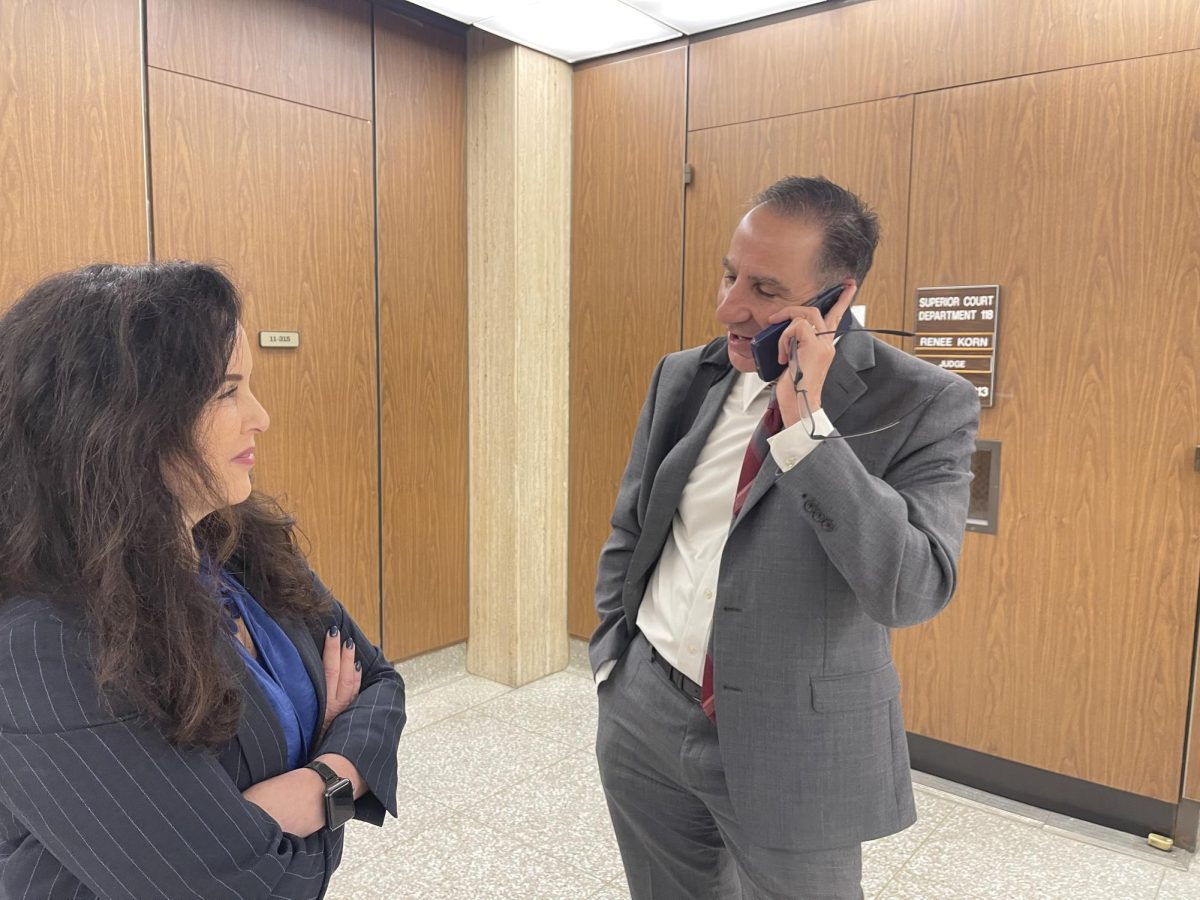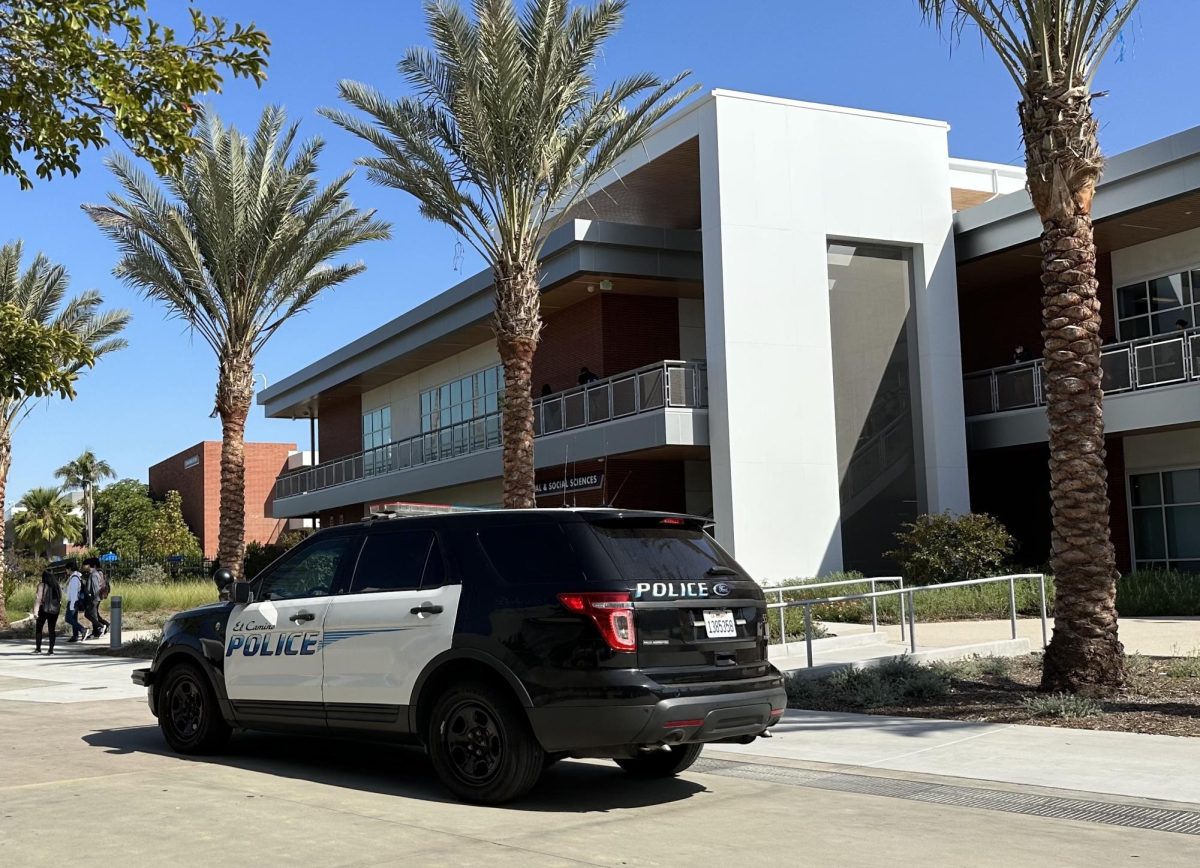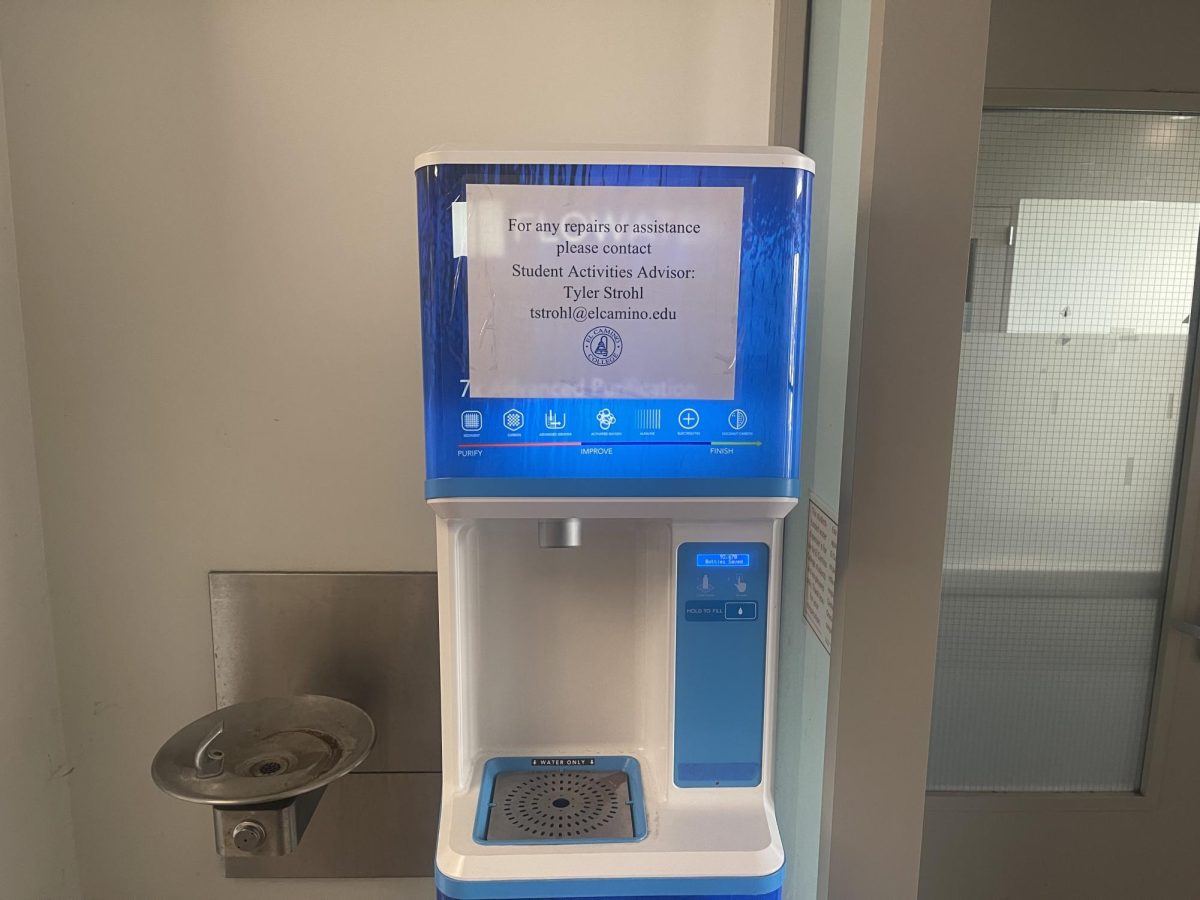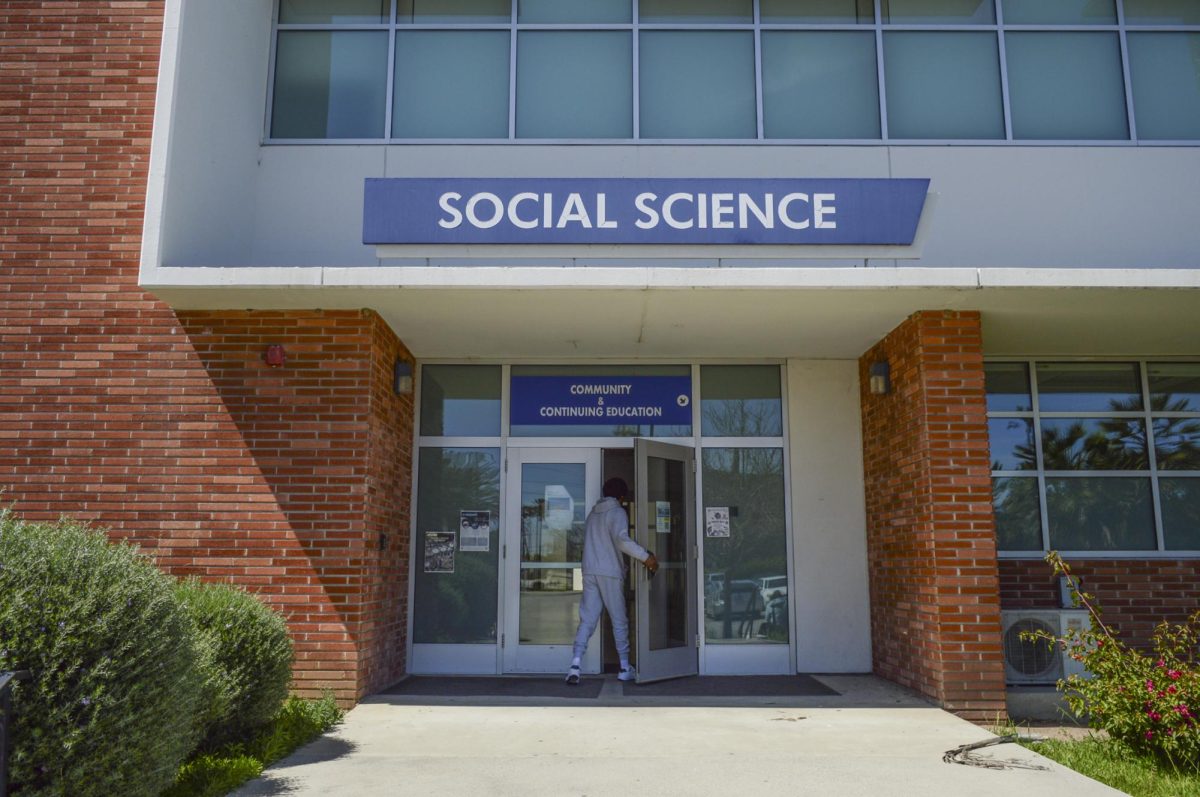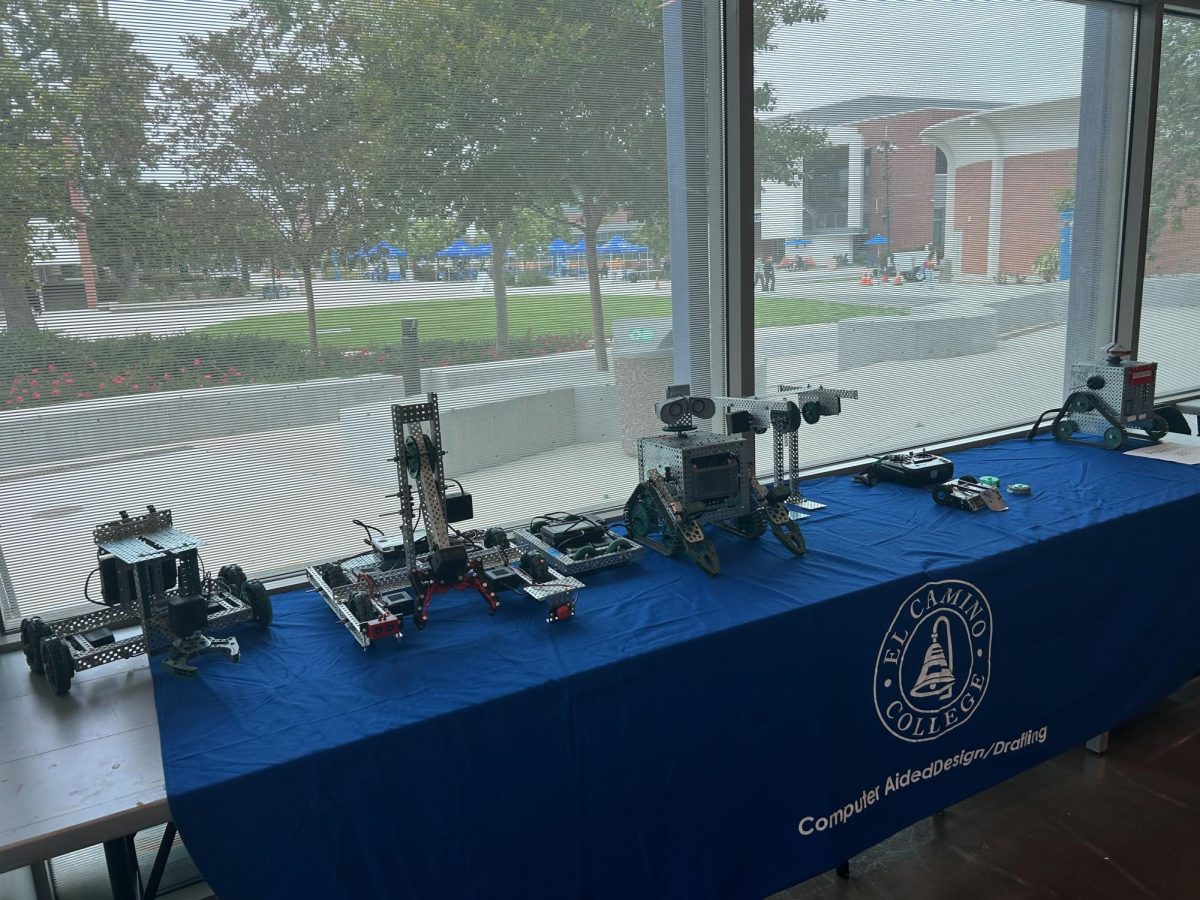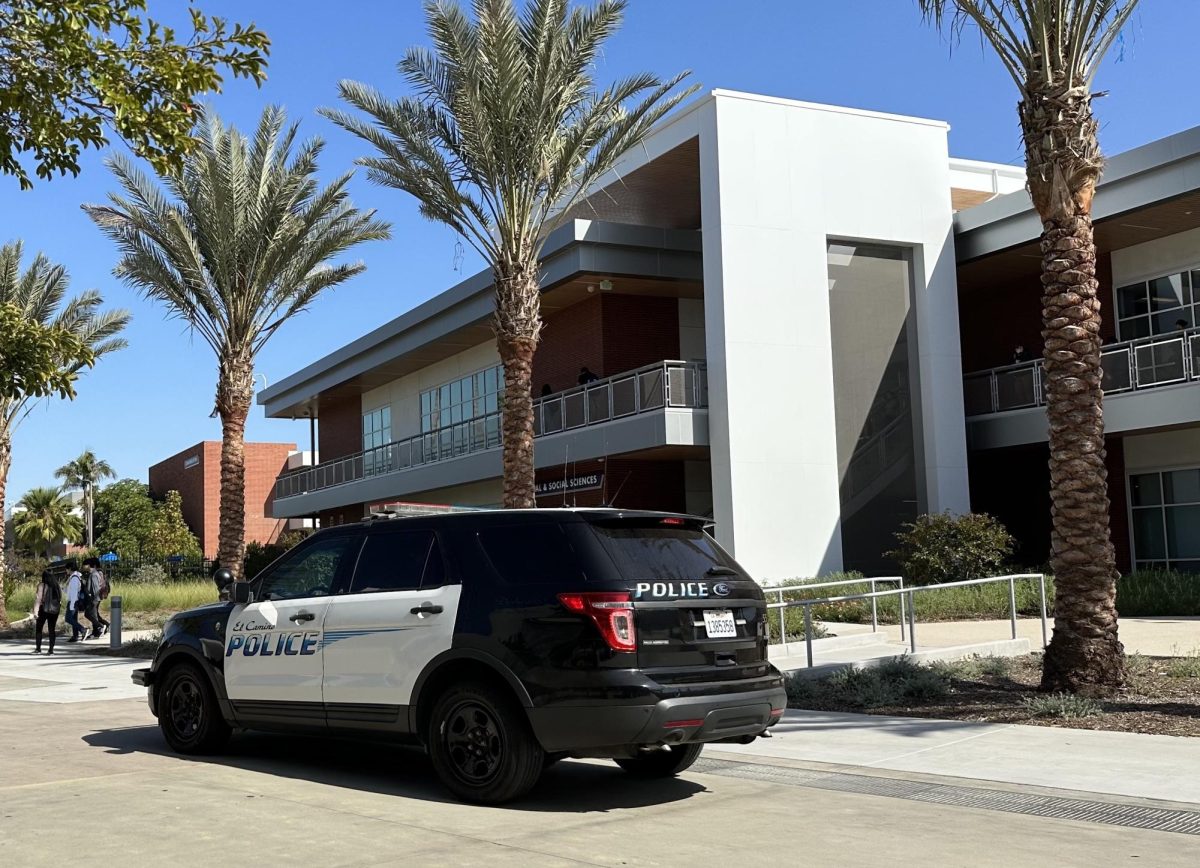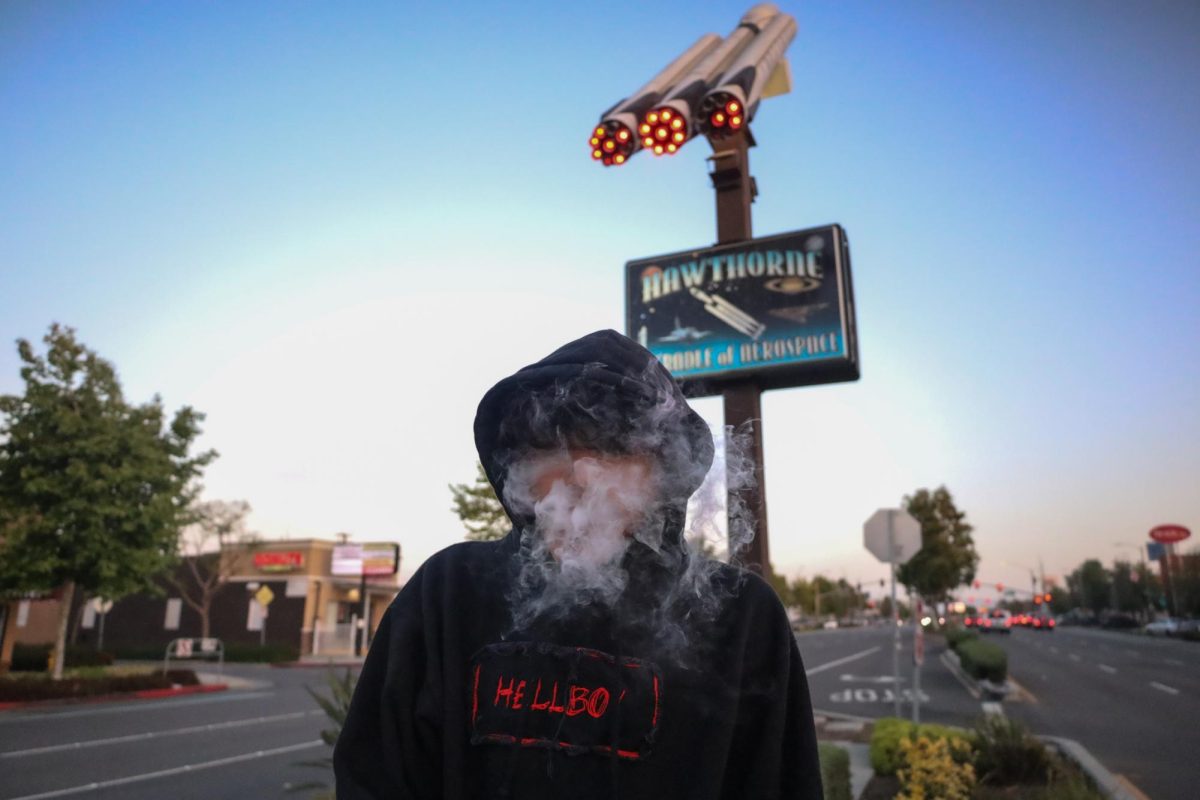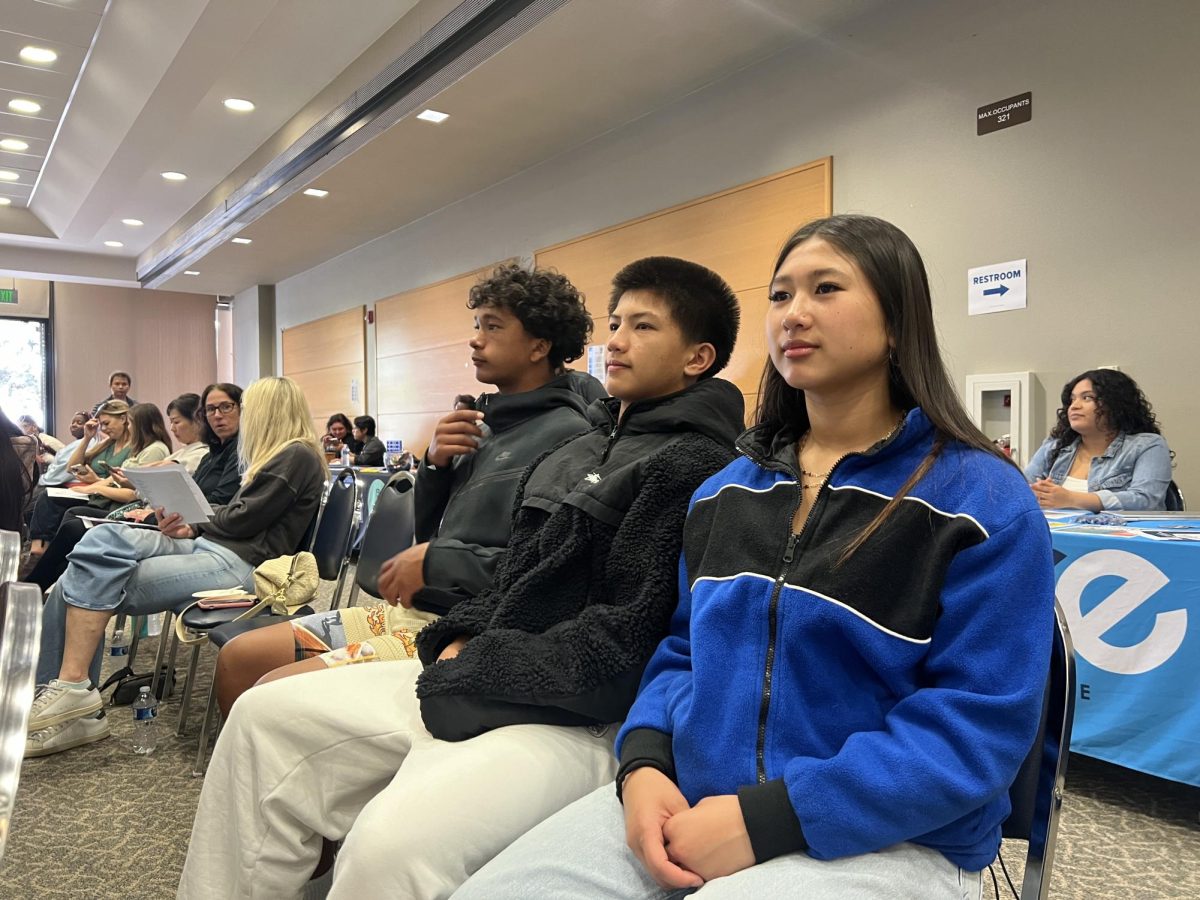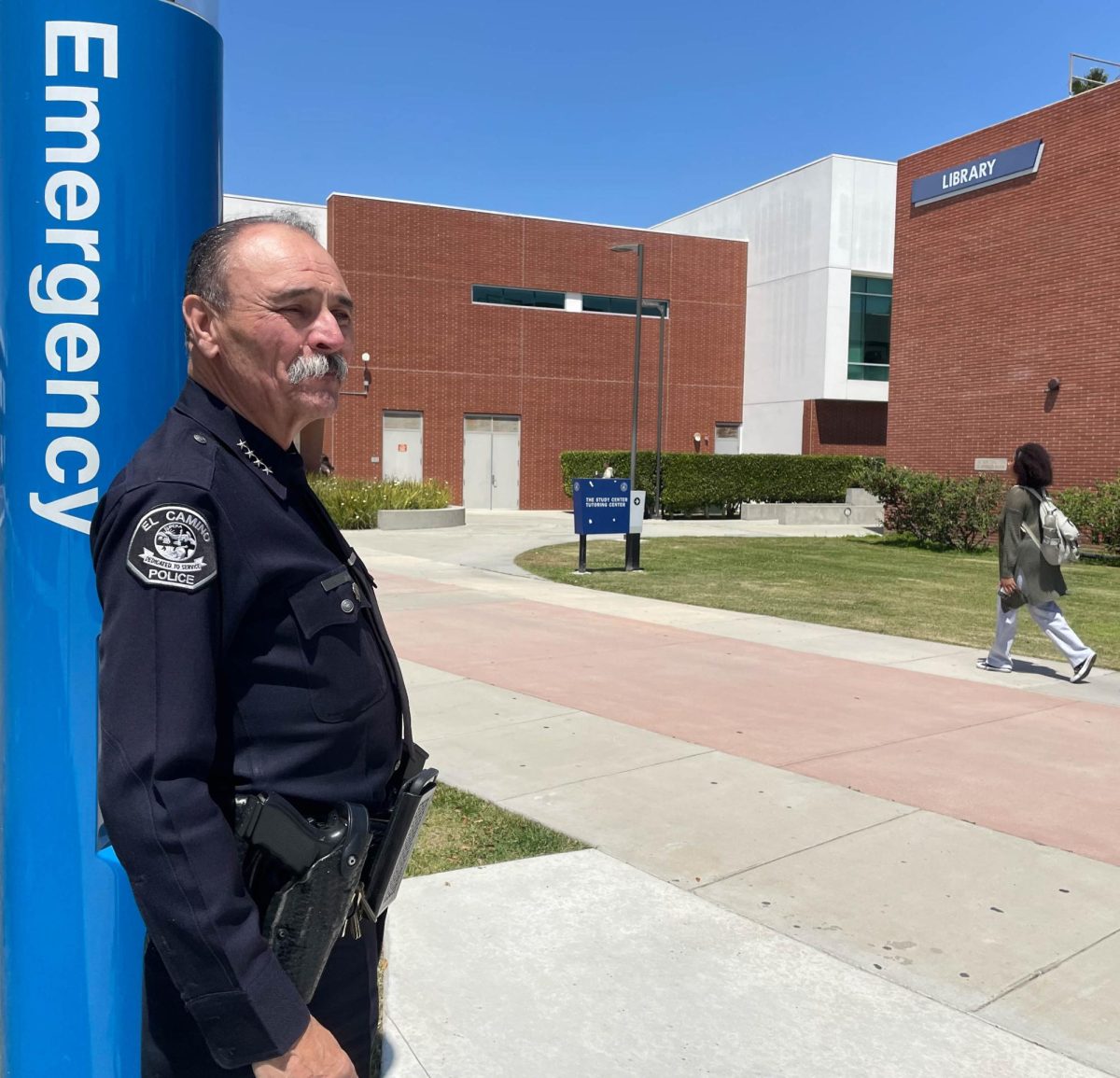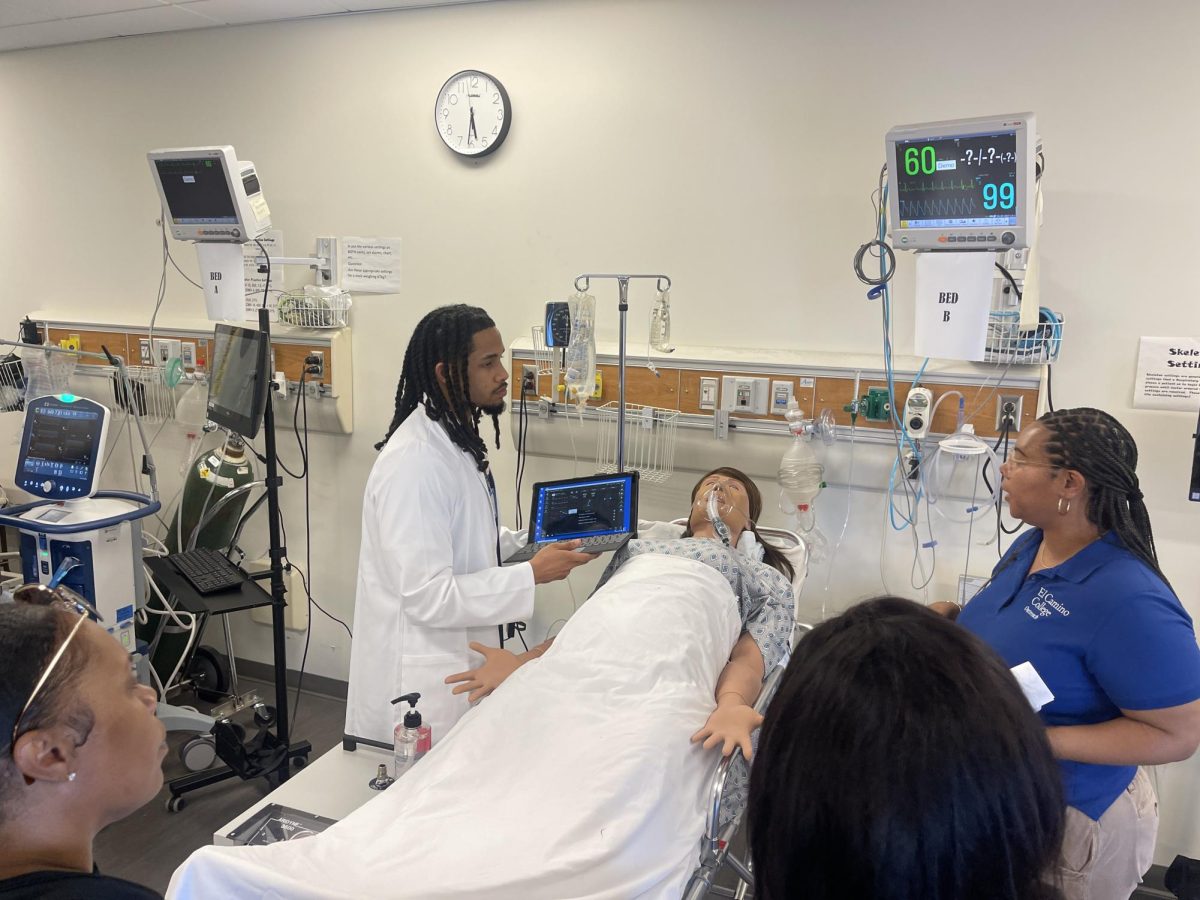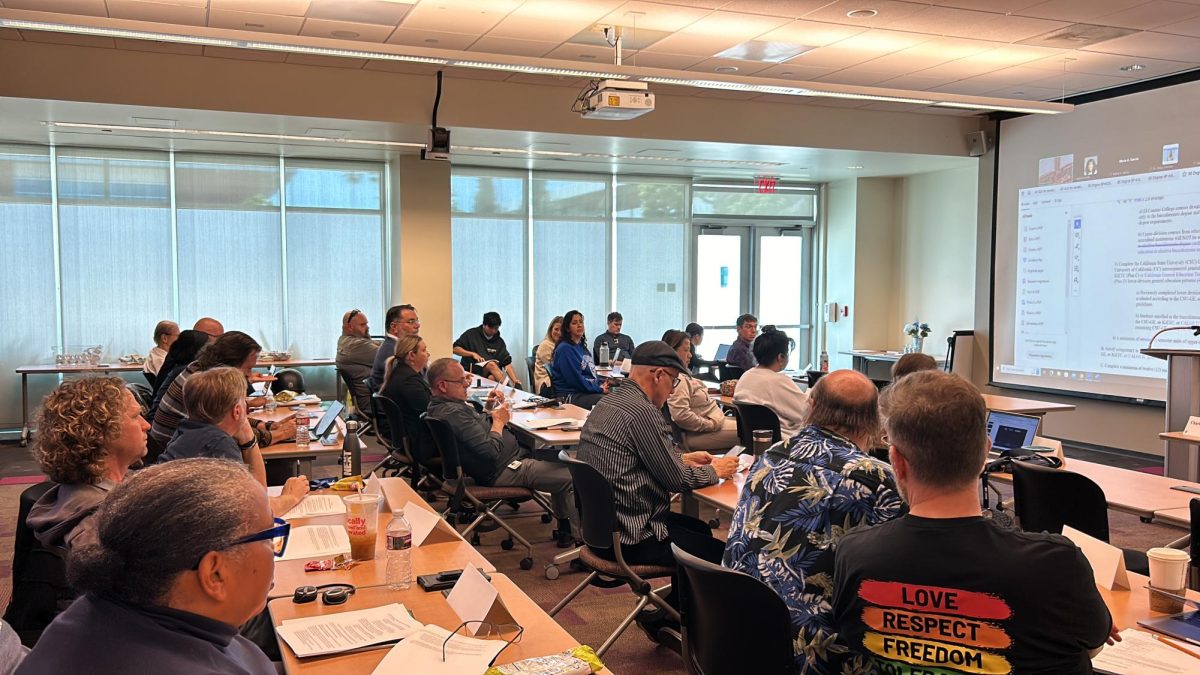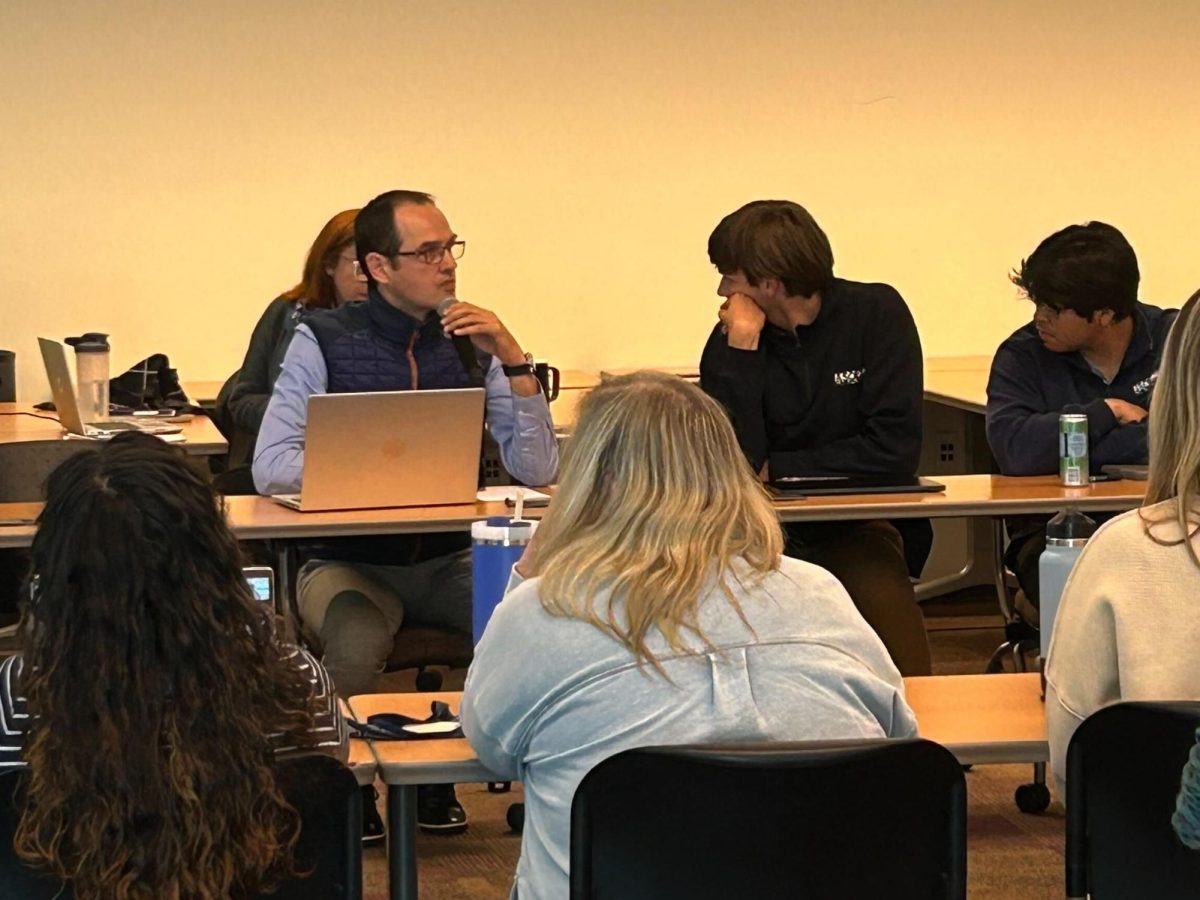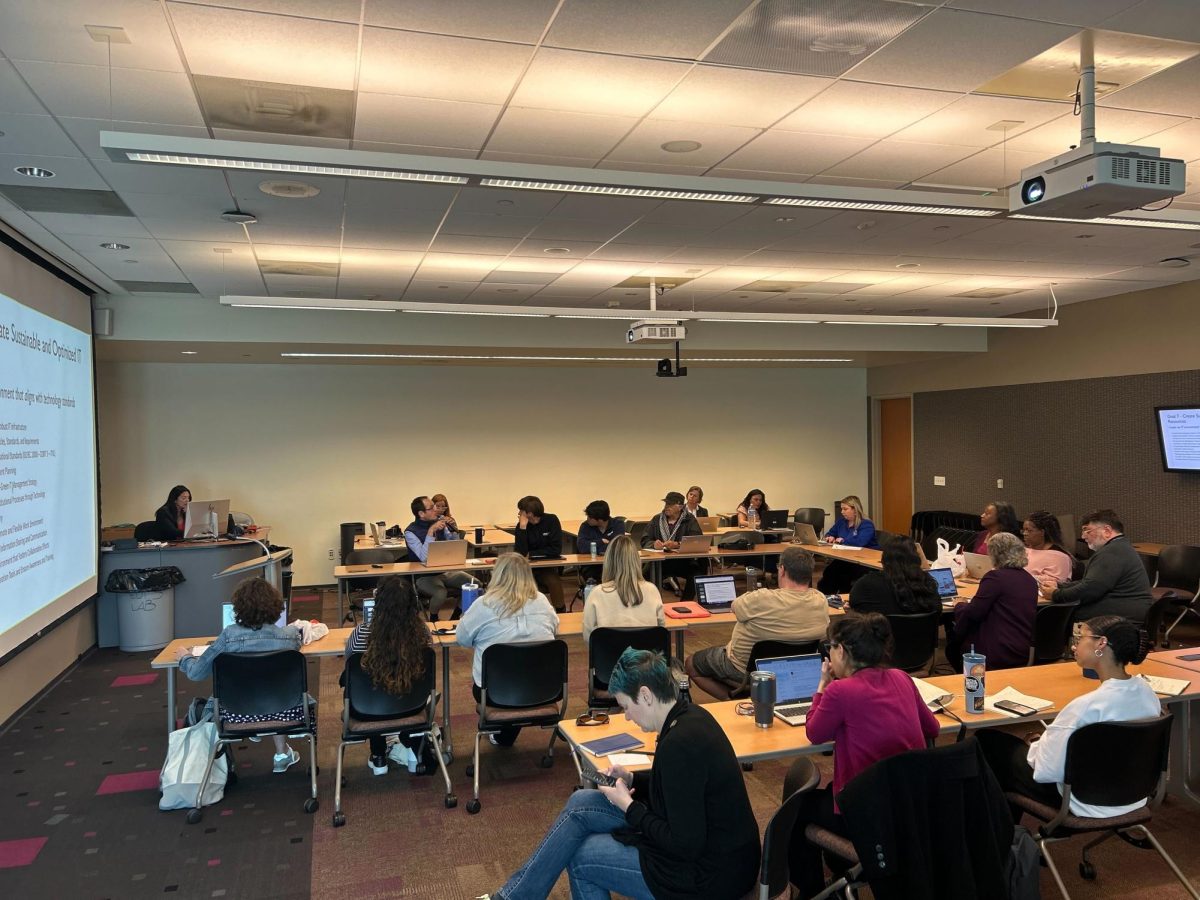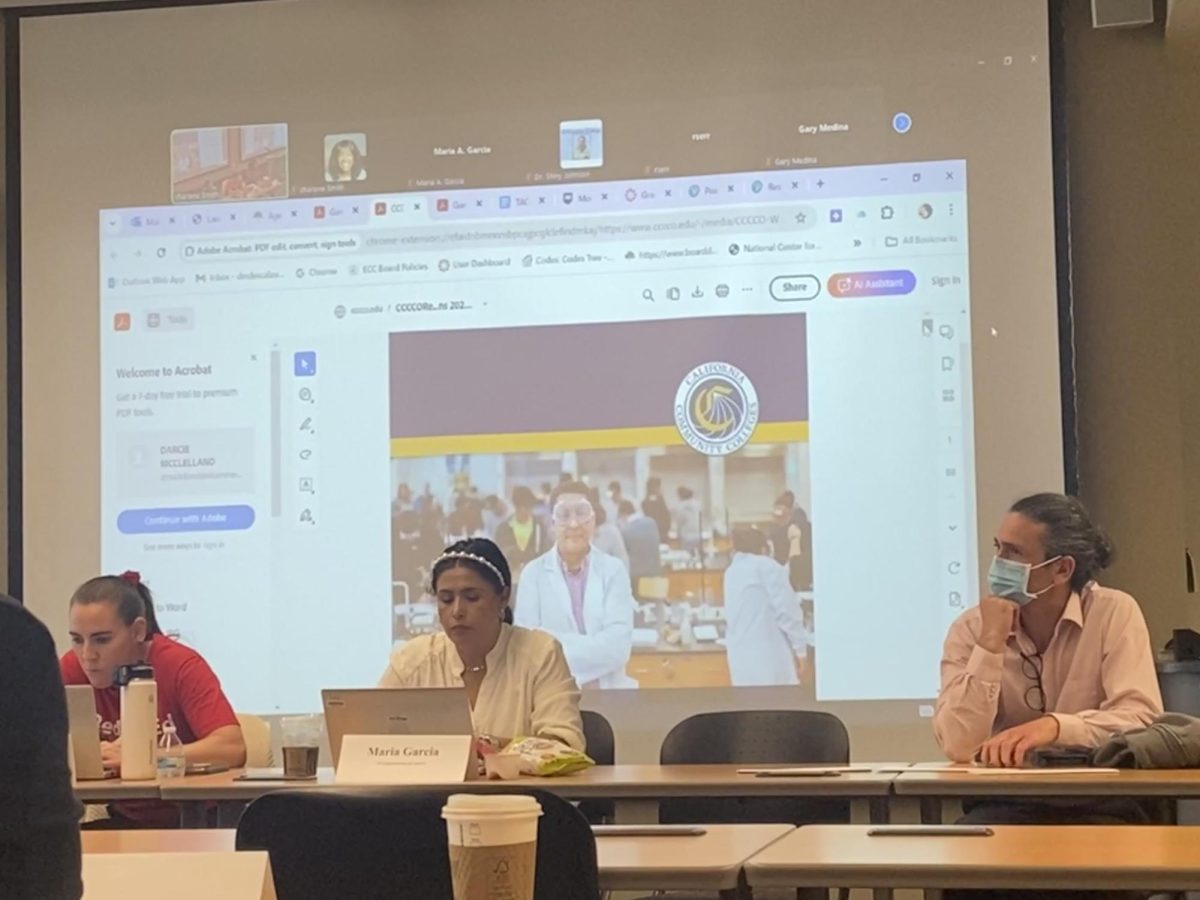More than three years after an El Camino College student’s body was found in a remote section of the Mojave Desert, the trial of two men accused of killing him has begun.
Ethan Astaphan, 30, from San Gabriel and Weijia Peng, 34, from Alhambra are charged with murder in the death of 21-year-old Juan Hernandez.
Hernandez worked at VIP Collective LA, an unlicensed marijuana dispensary located at 8113 South Western Ave. in South Los Angeles. Peng owned the shop. Astaphan was the store’s manager.
The trial is at Department 117 on the 11th floor of Clara Shortridge Foltz Justice Center in downtown Los Angeles.
On Feb. 9, Los Angeles Superior Court Judge Mark Hanasono called the first witness: Hernandez’s mother, Yajaira Hernandez.
As she entered court, Yajaira Hernandez looked both mournful and resolute.
She hadn’t seen Astaphan since she testified in his preliminary hearing in February of 2022. She had seen Peng only briefly at his arraignment.
L.A. County Assistant District Attorney Habib Balian asked Yajaira Hernandez what happened on Sept. 22, 2020.
She said her son used her car to drive from their apartment in the West Adams neighborhood to his job as a budtender at VIP. His shift was from 3 to 10 p.m.
“We texted a few times that day,” she said.
At 10:01 p.m., Juan Hernandez sent a text message to his mother saying he was hanging out with friends after his shift.
That was the last message Yajaira Hernandez ever received from her son.
On Sept. 23, she woke up at approximately 5:30 a.m. Like every morning, she went to check on her sons. Juan Hernandez’s bed was still made. He hadn’t been home.
Yajaira Hernandez’s calls went straight to her son’s voicemail.
“I knew something happened to him,” she said. “He always communicated with me. He knew I needed my car to go to work. This was completely out of character.”
She checked her son’s location on her phone. Nothing showed up. She called his friends. They hadn’t heard from him.
Yajaira Hernandez called her family for support. Her sister, Stephanie Pineda, and ex-boyfriend, Mike Burka, went to the dispensary to see if the employees knew anything.
They returned to the apartment with Peng’s phone number. Yajaira Hernandez called, but there was no answer. Peng never called back.
She called 911 to file a missing person report and went to LAPD’s Southwest Division to follow up in person. To push the police harder, she also filed a report that her car was missing.
Next, Yajaira Hernandez testified that she went to the dispensary with Pineda and Burka. She noticed that there were “cameras everywhere.”
Jailen Commissiong, the dispensary’s security guard, gave her Astaphan’s phone number. She immediately called, and no one picked up. But a few minutes later, Astaphan returned her call.
Yajaira Hernandez testified that Astaphan told her he had seen Juan Hernandez walk down the street at the end of his shift the night before. She asked to see the camera footage, but he told her they only had a live feed, with nothing recorded.
Yajaira Hernandez said Astaphan told her that they “didn’t want to get involved with the police.”
At the close of his questions, Balian projected a black-and-white image with a timestamp of Sept. 22, 2020 at 11:07 p.m. onto the court’s screen and asked Yajaira Hernandez if she recognized anyone.
“Yes, that’s my son,” she said
In the photo, Juan Hernandez is standing next to the sales counter inside the dispensary. To his right is a tall, thin man that resembles Peng. Entering the room from behind him is a third man resembling Astaphan.
Astaphan’s attorney, L.A. County Public Defender Larson Hahm, asked Yajaira Hernandez a few questions in his cross-examination.
He asked her to confirm that Juan Hernandez was a “tall, strong and athletic kid,” over 6 feet tall, approximately 190 pounds, a “normal boy” who grew up “roughhousing with his brothers” and a person who would fight back if his life was threatened.
“Yes,” Yajaira Hernandez agreed.
Soon after, she stepped down from the witness stand and left the courtroom.
Balian later told The Union Yajaira Hernandez wanted to stay for the entire trial. However, court policy dictates all witnesses, other than investigating officers, remain out of court to preserve the integrity of their testimony.
VIP’s security guard describes the last day of Juan Hernandez’s life
On the same day, Commissiong, who has dodged the LAPD’s and prosecutors’ attempts to question him for years, testified that he worked as the dispensary’s security guard.
He said his job was to open and close the dispensary, monitor the shop’s security cameras from a small security booth at the front of the shop and buzz people in and out of the dispensary.
Balian projected several time-stamped photos onto the court screen and Commissiong identified the people in them.
He met Peng “two to three times” and knew him only as “J,” the dispensary’s owner. He had regular contact with Astaphan, who he knew as “E.” Commissiong said it was “E” who restocked marijuana products and supplies and collected the cash at the end of each day.
Balian asked if he saw employees steal from the dispensary. Commissiong said he never saw any employee stealing money or products from the store.
“I trusted them,” he added.
He then testified that his little brother, Giovanni, and his neighbor, Fatboy, came to the shop before closing, on the day Juan Hernandez disappeared.
Commissiong said when he, his brother and Fatboy left at 11:06 p.m., Peng, Astaphan and Juan Hernandez were the only people inside the dispensary.
According to Commissiong, when he asked about Juan Hernandez’s disappearance, Astaphan said, “He’s probably out with some bitch.”
Balian asked Commissiong to identify the people in an image timestamped 11:07:20 p.m.
According to Commissiong, Juan Hernandez was the one lying face down behind the counter on the floor of the dispensary.
Astaphan was lying on top of him with his back leveraged against Juan Hernandez’s back.
Astaphan also had his right arm wrapped under Juan Hernandez’s neck, with his left hand holding onto his right forearm.
Peng was standing, bent over, close to the heads of both men.
Peng was positioned as if watching or giving instructions. In the frame, he is not making any physical moves to pull Astaphan away from Juan Hernandez.
In court, Balian asked Commissiong, “You were not enthusiastic about testifying. Do you have a fear of being labeled a rat or a snitch?”
Commissiong shifted in his chair and leaned away from the microphone. “It’s hard to explain,” he said. “I’m part of an organization. They don’t tolerate that.”
Balian continued. “There’s a code. You don’t snitch on people? Coming into court, talking to cops, it’s frowned upon?”
Commissiong nodded. “Very frowned upon,” he said.
“You could be punished,” Balian said.
“Yes sir,” Commissiong said.
In cross-examination, Peng’s attorney, Ronald Hedding, confirmed with Commissiong that by belonging to an “organization” he meant a gang.
Balian stood again to question Commissiong. He asked if the disappearance and murder of Juan Hernandez had anything to do with a gang.
Commissiong said it was in “no way related.”
Working conditions in dispensaries
Daniel Romero testified after Commissiong in the afternoon of Feb. 9. He said he works at Home Depot. In 2020, he was working as a budtender and a morning shift supervisor at VIP.
Both Commissiong and Romero described the work conditions in the unlicensed marijuana industry: untrained staff, long hours, cash payments, little to no supervision, marijuana use while on the job and unlicensed security.
Romero confirmed Commissiong was the only security guard and worked from 9 a.m. to 10 p.m. every day the shop was open.
Under cross-examination by Hahm, Romero said he never saw Juan Hernandez or any employee steal from the shop. Astaphan never asked him about missing money or products.
According to Romero, Juan Hernandez came to work at 3 p.m. on Sept. 22, 2020. Like most days, they went to the nearby liquor store to buy snacks. Romero hung out for more than an hour after his shift ended and the two of them played poker.
Romero testified he would usually go back to the shop at closing to collect the money.
“But that day, Astaphan called and told me not to go, that he would take care of it,” Romero said.
Balian showed the court a photo of a black SUV and asked Romero if he recognized it.
“That looks like the kind of car ‘E’ had,” he said. “A black BMW SUV X3 or X5.”
The next day, Romero said he was the person who talked to Yajaira Hernandez’s family during their first visit and gave them Peng’s phone number. His concern grew at 3 p.m. when Juan Hernandez didn’t show up for the start of his shift.
In separate conversations, Astaphan and Peng told Romero they saw Juan Hernandez leave the shop the night before.
San Bernardino County’s chief forensic pathologist testifies as to cause of death
Late on the afternoon of Feb. 9 and again on the morning of Feb. 13, Dr. Brian Hutchins, chief forensic pathologist with the Coroner Division of the San Bernardino County Sheriff’s Department, took the stand.
On Nov. 15, 2020, when Hutchins first examined a body found in a remote section of the Mojave Desert, he said he couldn’t determine the cause of death.
On Nov. 16, 2020, using Mikrosil casting to lift fingerprints, the remains were identified as those of Juan Hernandez.
The LAPD asked Hutchins to look for signs of strangulation, but he said the body was exhibiting “severe decomposition,” including missing soft tissue and muscle and exhibiting leathering of skin in the neck and face. This made signs of ligature marks, bruising or broken capillaries impossible to find.
Animal activity had also destroyed much of the remains. Hutchins said he could not check for petechial hemorrhaging in the eyes – consistent with strangulation – because the eyes were missing. The neck bones, he said, were not fractured.
The toxicology report also came back negative for marijuana, alcohol, cocaine and methamphetamine, which are the only substances Hutchins said are regularly tested for.
In court on Feb. 9, Balian and Los Angeles County Assistant District Attorney Ethan Milius demonstrated a chokehold while Hutchins described for the jury the physical impact of such a maneuver on a person’s ability to remain conscious or alive.
On Feb. 13, Hutchins testified that the LAPD asked him to test for ketamine on Dec. 21, 2020. He had preserved a small section of brain tissue as evidence and retested it. Hutchins said he found a lethal dose of ketamine in Juan Hernandez’s tissue.
Balian showed Hutchins three images, each with Astaphan lying on top of Juan Hernandez exerting pressure on his back. The first is Astaphan pressing his back into Juan Hernandez’s back while also twisting his upper body to lock his arm around his neck.
In the two following photos Astaphan rolls onto his side and then his chest, exerting pressure on the back of Juan Hernandez’s shoulders, neck and head. Peng was also in each frame.
A chokehold exerts pressure to the carotid arteries on the right and left side of the neck, Hutchins said, cutting off oxygen without causing fractures.
Under a chokehold, a person will lose consciousness within 10 to 15 seconds, suffer damage to the brain after 40 to 45 seconds, and die within two to three minutes, Hutchins added. Death would come quicker if ketamine were also in the person’s system.
If someone is strangled and they are conscious, Hutchins said, it’s typical to see scratches on the attacker’s arms or face as the victim struggles to fight back. But in the photos, Hutchins said, Juan Hernandez is lying face-down, his arms are tucked under his body, his legs are stretched out, and his body – from photo frame to frame – doesn’t move.
Hutchins testified for ketamine to reach the brain, the victim would have to be alive, his heart pumping blood to the organs.
Balian asked Hutchins – upon seeing the images of Astaphan on top of Juan Hernandez along with the positive test for ketamine – what was his ruling as to the cause of death?
“Acute ketamine toxicity with chokehold,” Hutchins said.
“No doubt?” Balian asked.
“No doubt,” Hutchins said.
Prosecutors referred to Juan Hernandez as “the victim” throughout the questioning of Hutchins.
In his cross-examination, Hahm referred to Juan Hernandez as “the decedent.”
On Feb. 13, he asked Hutchins how many autopsies he had performed where ketamine was the cause of death.
“No more than ten cases in 11 years” with the coroner’s division, Hutchins said.
“And in how many cases was it a murder investigation where ketamine was used to kill?” Hahm asked.
“Only this one,” Hutchins said.
Yajaira Hernandez’s car is found but there are no clues on her son’s disappearance
Officer William Chamberlain, a 15-year veteran with the LAPD, testified next that he and his partner were patrolling the area near 6400 South Figueroa St. on Sept. 24, 2020 when they observed a car with its lights on, “parked kind of funny.” A sex worker told them the car had been there for a while.
Chamberlain ran a “want and warrant check” on the car and it came up as a missing person’s vehicle. The car was found less than three miles from the VIP marijuana dispensary.
Yajaira Hernandez had her car back but looking for her son was still not an LAPD priority.
Extortion threats spark LAPD’s investigation into Juan Hernandez’s disappearance
LAPD Robbery and Homicide Detective Jennifer Hammer climbed onto the witness stand on the afternoon of Feb. 13. A department veteran of 30 years, she was recently promoted to Detective Supervisor of the elite LAPD unit.
On Sept. 26, 2020, Hammer spoke to Yajaira Hernandez for the first time.
Juan Hernandez’s older brother had created a missing person flyer, urging people to call with any news. Family and friends posted the flyers throughout Los Angeles and widely on social media. Almost immediately, Yajaira Hernandez received threatening messages demanding money for her son’s release or life.
Hammer said she and her then partner Detective Daniel Jaramillo (now retired) met with Yajaira Hernandez about the extortion attempts as part of their work investigating robberies and kidnappings for ransom.
On Sept. 29, 2020 at 9 a.m., the LAPD served a search warrant at the dispensary. She called Peng and Astaphan, but no one from the shop was there to let them in. They called the Los Angeles City Fire Department to help them break into the security doors at the back of the shop.
From the witness stand, Hammer described the search as photos of the dispensary’s interior were projected on the court’s monitor.
Hammer described the dispensary as “extremely filthy, in disarray, broken cords and wires everywhere, broken chairs still in use, an unusable bathroom.” The electricity was off. It ran off a gas-powered generator kept outside in the back of the shop.
They recovered a digital video recorder (DVR) from the front security booth and left through the back door, securing the door with a new lock they bought from Home Depot.
Hammer left a copy of the search warrant and her contact information so she could return to unlock the door for the dispensary’s owner or staff. No one ever called.
There were no videos on the DVR from the day of Juan Hernandez’s disappearance or before. But one video from the early morning of Sept. 23, 2020, shows a “clean-up” of the dispensary.
Next: Law enforcement tracks the movement of the defendant’s phones and cell phone network triangulation leads to the location of the slain student’s body



